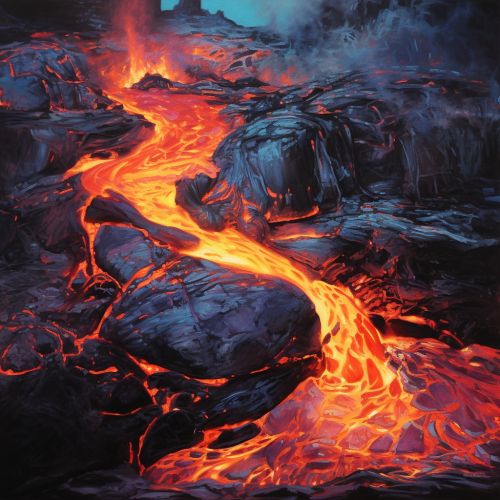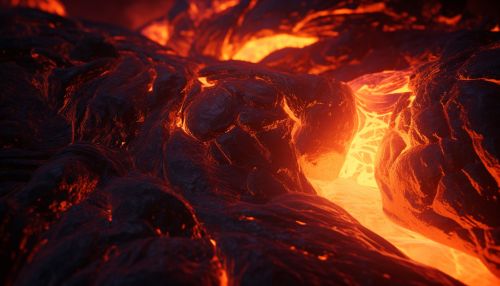Magma Degassing
Introduction
Magma degassing is a geological process that involves the release of gases from molten rock beneath the Earth's surface. This process plays a crucial role in the dynamics of volcanic eruptions and the formation of certain types of igneous rocks.


Magma Formation and Composition
Magma forms when the Earth's mantle or crust melts due to changes in temperature, pressure, or the addition of water. The composition of magma varies widely, but it generally contains silicate minerals, dissolved volatile substances, and gases. The most common gases in magma are water vapor (H2O), carbon dioxide (CO2), sulfur dioxide (SO2), and several other minor gases such as hydrogen sulfide (H2S), hydrogen (H2), carbon monoxide (CO), sulfur (S), chlorine (Cl2), and fluorine (F2).
Degassing Process
Magma degassing occurs when the pressure on the magma decreases, allowing the dissolved gases to exsolve, or come out of solution. This can happen as the magma rises towards the surface, or when it cools and crystallizes. The exsolved gases can either remain trapped in the magma, leading to the formation of gas bubbles, or they can escape to the surface through volcanic vents or fumaroles.
Role in Volcanic Eruptions
The release of gases from magma is a key driver of volcanic eruptions. As magma rises towards the surface, the decrease in pressure allows more gases to exsolve, increasing the volume of the magma and the pressure within the volcanic conduit. This can lead to explosive eruptions if the pressure exceeds the strength of the overlying rocks. The type and intensity of the eruption can be influenced by the amount and composition of the gases in the magma, as well as the viscosity of the magma, which affects how easily the gases can escape.
Impact on Igneous Rock Formation
Magma degassing also plays a role in the formation of certain types of igneous rocks. For example, the formation of pumice, a type of volcanic rock, is largely due to the rapid decompression of gas-rich magma, which causes the magma to froth and solidify into a porous rock. Similarly, the formation of obsidian, a type of volcanic glass, can be influenced by the degassing of magma, which can lead to changes in the magma's viscosity and cooling rate.
Environmental Impact
The gases released during magma degassing can have significant environmental impacts. For instance, sulfur dioxide can react with water vapor in the atmosphere to form sulfuric acid, leading to acid rain. Carbon dioxide, a greenhouse gas, can contribute to global warming. However, it's worth noting that volcanic CO2 emissions are dwarfed by human-caused emissions.
Conclusion
Magma degassing is a complex and important geological process that plays a key role in volcanic eruptions and the formation of certain types of igneous rocks. Understanding this process is crucial for predicting and mitigating the impacts of volcanic eruptions, as well as for understanding the Earth's geological history and the processes that shape its surface.
